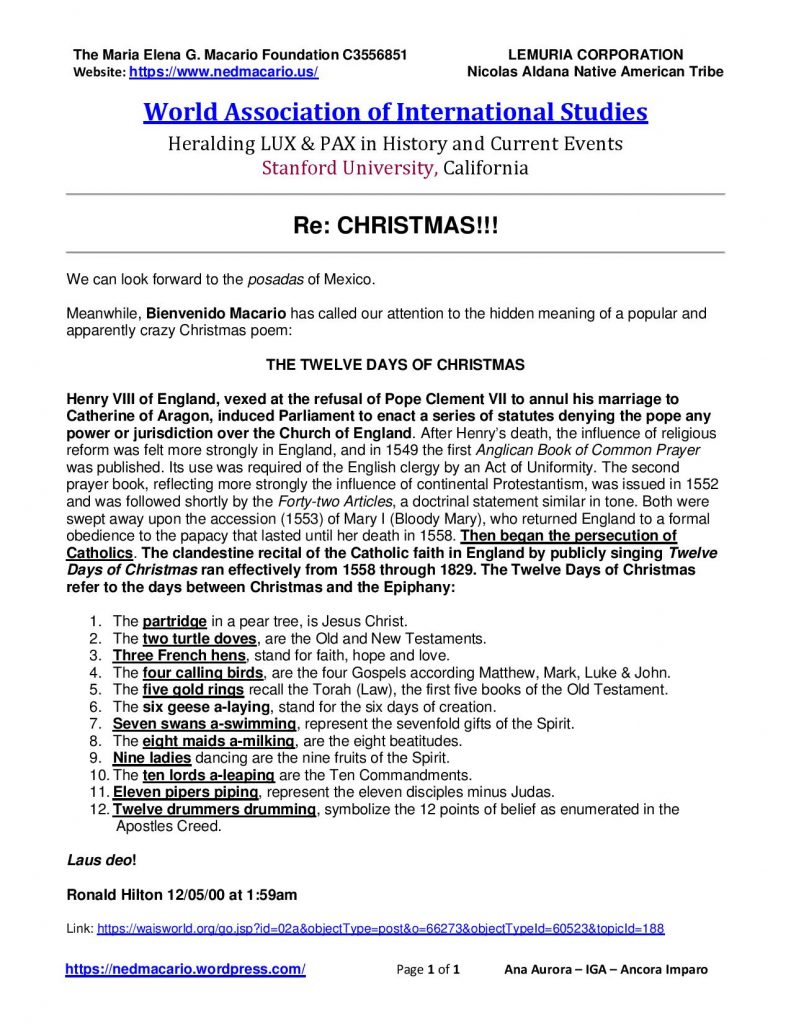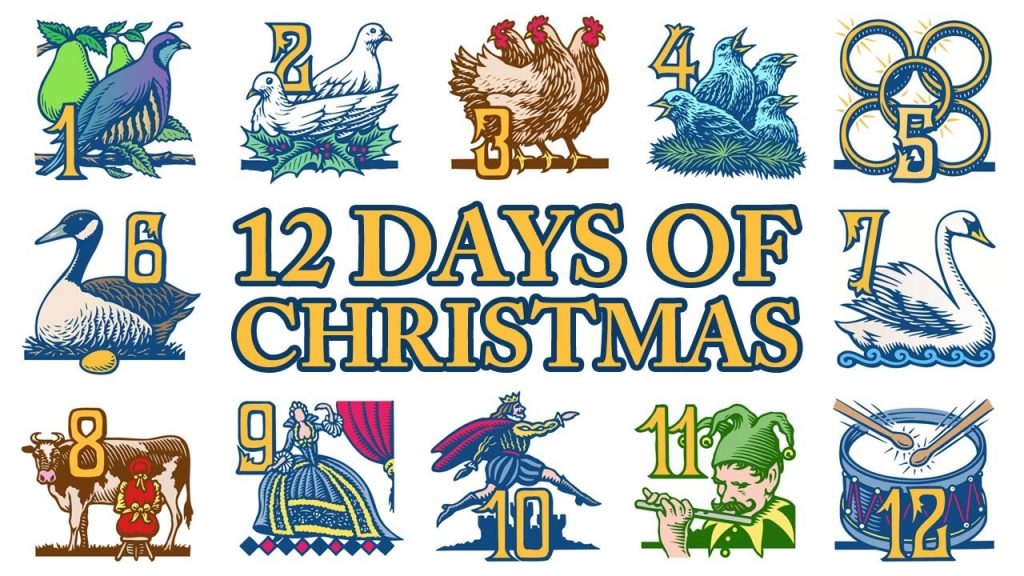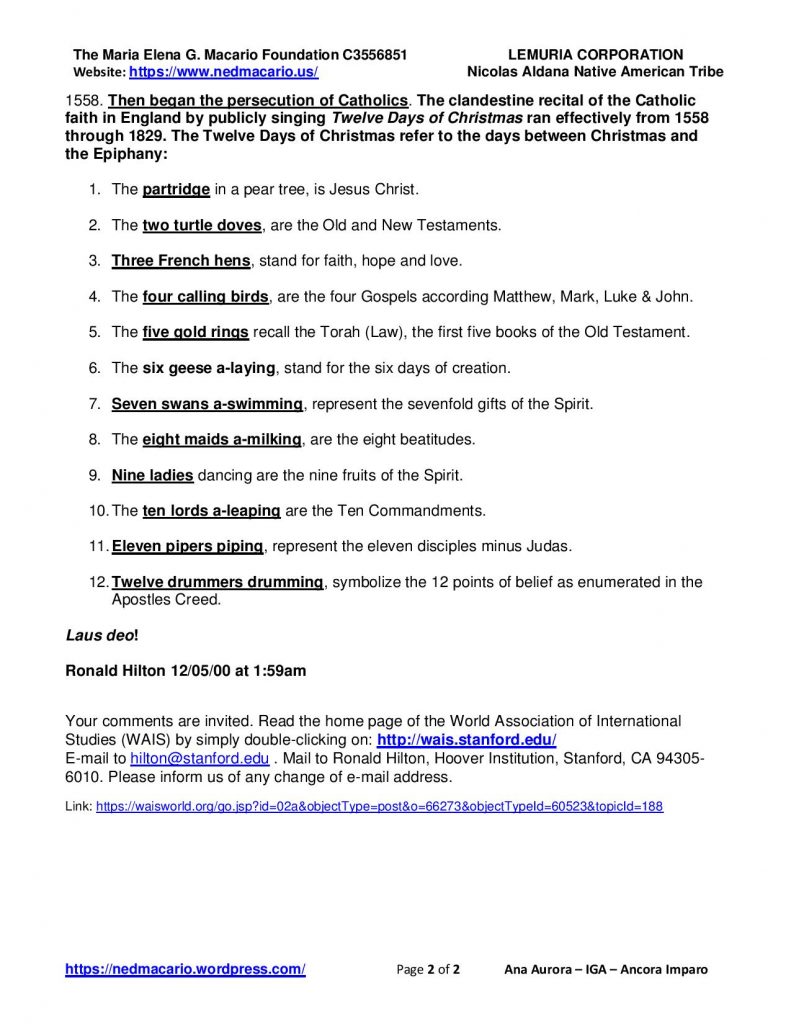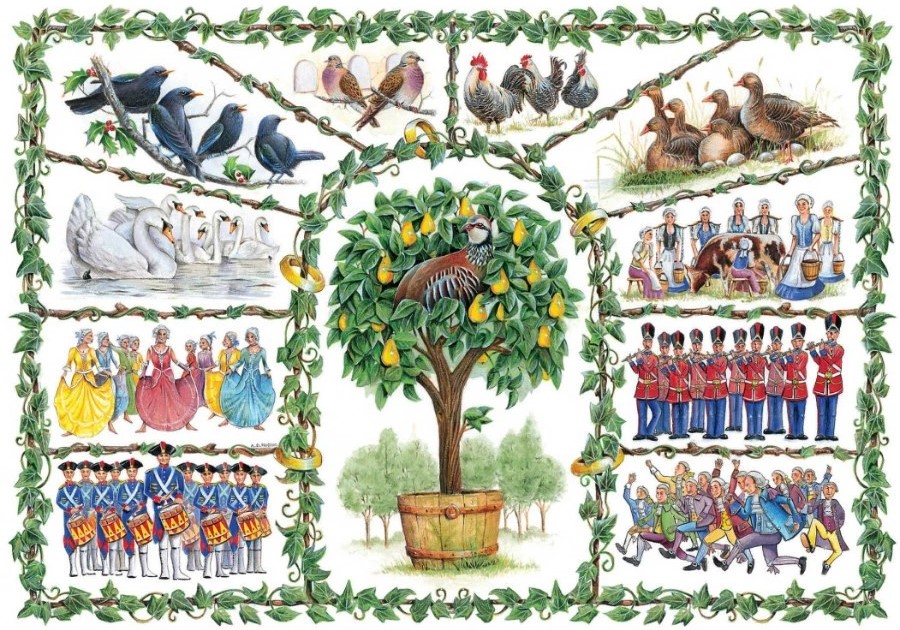Dec. 18, 2006
This was posted on Dec. 5, 2000. In all my studies and reading, this is one I will never forget. The work started late Nov. 2000. I worked on this continuously for three day and three nights without sleeping (72 hours) and it is not finished. I asked Prof. Hilton to help me finish this worked. It was so difficult that I’ve decided to keep all my references and bought replacements so that I won’t have to use copies of those books ever again. They shall be the souvenir of that work.
I promised to do a similar work every Christmas. It’s done but not submitted or posted. Anybody who wants to help?
Best of the season to all.
Nov. 21, 2019
I dedicate this post to my parents Jose R. Macario and Aurora C. Macario and to my wife Maria Elena G. Macario.
The Meaning Behind The Twelve Days of Christmas





CHRISTMAS!! (Ronald Hilton, USA, 12/05/00 1:59 am)
https://waisworld.org/go.jsp?id=02a&objectType=post&o=66273&objectTypeId=60523&topicId=188
So-called Christmas is nigh. The first Christmas card has arrived. In the US, stores are already waging their sales battles to welcome the Prince of Peace. Spain, thank God, has not erased the meaning of the Christmas season. It is about to celebrate the feast of the Immaculate Conception, December 8.which refers to the dogma that not only was the Virgin Mary immaculate but so was her mother Anne. Pope Pius IX in the nineteenth century made it an official dogma of the Church, and the Spanish government required professors to take an oath swearing that they believed this dogma. Many refused to do so, and were compelled to resign. As Spaniards rush to resort towns for a long week end in celebration, I wonder how many remember this polemic. Spain has semi-secularized the holiday by renaming it Feast of the Constitution and the Immaculate Conception (in that order) in honor of the December 6, 1978 referendum which approved the constitution under which Spain is now governed. To make the public realize the benefits of that constitution, parliament held open house for two days. Long lines waited to get in and were rewarded with a chance to sit in the seats and feel like deputies. A splendid public relations gesture.
Germany began celebrating Christmas with a display in Nuremberg of mechanical Jesuses which had as much relation to the real Jesus as the mechanical man, the latest triumph of Japanese technology, has to a man of flesh and bones. Nuremberg has been restored to its place as the toy capital of Germany. The public celebrated the season with the usual sausages and beer.
We can look forward to the posadas of Mexico.
Meanwhile, Bienvenido Macario has called our attention to the hidden meaning of a popular and apparently crazy Christmas poem:
THE TWELVE DAYS OF CHRISTMAS
Henry VIII of England, vexed at the refusal of Pope Clement VII to annul his marriage to Catherine of Aragon, induced Parliament to enact a series of statutes denying the pope any power or jurisdiction over the Church of England. After Henry’s death, the influence of religious reform was felt more strongly in England, and in 1549 the first Anglican Book of Common Prayer was published. Its use was required of the English clergy by an Act of Uniformity. The second prayer book, reflecting more strongly the influence of continental Protestantism, was issued in 1552 and was followed shortly by the Forty-two Articles, a doctrinal statement similar in tone. Both were swept away upon the accession (1553) of Mary I (Bloody Mary) , who returned England to a formal obedience to the papacy that lasted until her death in 1558. Then began the persecution of Catholics The clandestine recital of the Catholic faith in England by publicly singing Twelve Days of Christmas ran effectively from 1558 through 1829. The Twelve Days of Christmas refer to the days between Christmas and the Epiphany:

- The partridge in a pear tree, is Jesus Christ.
- The two turtledoves, are the Old and New Testaments.
- Three French hens, stand for faith, hope and love.
- The four calling birds, are the four Gospels according Matthew, Mark, Luke & John.
- The five gold rings recall the Torah (Law), the first five books of the Old Testament.
- The six geese a-laying, stand for the six days of creation.
- Seven swans a-swimming, represent the sevenfold gifts of the Spirit.
- The eight maids a-milking, are the eight beatitudes.
- Nine ladies dancing are the nine fruits of the Spirit.
- The ten lords a-leaping are the Ten Commandments.
- Eleven pipers piping, represent the eleven disciples minus Judas.
- Twelve drummers drumming, symbolize the 12 points of belief as enumerated in the Apostles Creed.
Laus deo!
